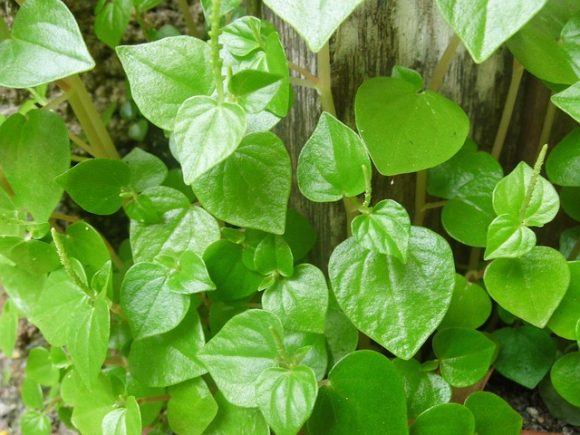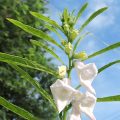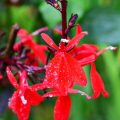- The Miraculous Shiny Bush Plant - January 18, 2021
- Colorful, Edible and Medicinal Celosia - January 10, 2021
- Radish, a Nutritional Power House - December 19, 2020
Peperomia pellucida, commonly known as the shiny bush, pepper elder, silverbush, and greenhouse tea plant, or slate pencil plant, is a fleshy annual flowering plant belonging to the piperaceae family.
[Note: The Right Flowers is not a medical site. Knowledge of and information about the therapeutic benefits and applications of flowers, while known through the ages, does not constitute medical advice. If you are having health issues, you should consult with a physician.]
It is native to the Americas and Asia but has spread to other regions of the world due to its popularity as an indoor ornamental plant. The plant is not fussy and can thrive under partial shade or artificial light. This makes it ideal for planting at home in containers and offices. Though the plant requires moist soil to thrive, you should avoid watering it too often as it detests soggy soil.
The plant thrives in tropical habitats and prefers shaded, damp places. You are likely to find it growing in wastelands, by the roadsides and other disturbed sites, preferably away from direct sunlight.
The shiny bush plant has light green, fleshy, shiny leaves with a smooth waxy appearance. It produces small, light green flowers that grow from the plant’s cord-like spikes around the leaves. The flowers normally appear during spring but the plant can flower throughout the year in moderate climates.
Apart from its ornamental value, the shiny bush is used for herbal and food purposes. The leaves, flowers, and tender stems are cooked and eaten as vegetable greens or utilized in salads. These are highly popular in the African, South American, and Asian cuisines. The shiny bush has a strong mustardy smell and a crunchy texture.
The plant’s aerial parts are crushed to extract its juices, which are applied to inflamed eyes. The extract is also used internally to treat coughs, headaches, kidney problems, sore throats, and prostrate conditions. The leaves, when blanched or steamed and allowed to cool down sufficiently, are topically applied over shallow wounds to reduce pain and inflammation.
The whole plant is also crushed to form a poultice for dressing fresh wounds or made into an infusion, which is used to calm down fevers. In Brazil, an infusion of the plant is used to lower cholesterol, while in other regions it is used to treat fatigue and gout.
The pepper elder is so popular as a herbal plant in Asia that it is among the top ten plants recognized in the Philippines for medicinal purposes. Its popularity and wide usage as a medicinal herb are what make people refer to it as a miracle plant.
If you are a lazy plant enthusiast, a highly versatile ornamental plant that is easy to grow in your yard, balcony, or study room, yet potent enough to give you herbal benefits, is your best bet. And you can eat it too.





